
The 42nd Infantry Division was an infantry division of the British Army. The division was raised in 1908 as part of the Territorial Force (TF), originally as the East Lancashire Division, and was redesignated as the 42nd Division on 25 May 1915. It was the first TF division to be sent overseas during the First World War. The division fought at Gallipoli, in the Sinai desert and on the Western Front in France and Belgium. Disbanded after the war, it was reformed in the Territorial Army (TA), in the Second World War it served as the 42nd Infantry Division with the British Expeditionary Force (BEF) and fought in Belgium and France before being evacuated at Dunkirk. The division was later reformed in the United Kingdom and, in November 1941, was converted into the 42nd Armoured Division, which was disbanded in October 1943 without serving overseas. A 2nd Line duplicate formation, the 66th Infantry Division, was created when the Territorials were doubled in both world wars.

Colchester Garrison is a major garrison located in Colchester in the county of Essex, eastern England. It has been an important military base since the Roman era. The first permanent military garrison in Colchester was established by Legio XX Valeria Victrix in AD 43, following the Roman conquest of Britain. Colchester was an important garrison town during the Napoleonic Wars and throughout the Victorian era. During the First World War, several battalions of Kitchener's Army were trained there.
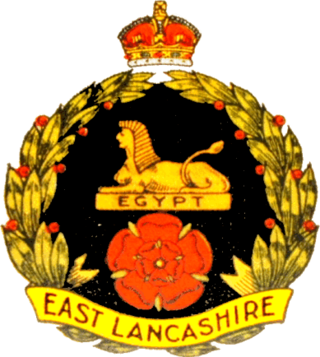
The East Lancashire Regiment was, from 1881 to 1958, a line infantry regiment of the British Army. The regiment was formed in 1881 under the Childers Reforms by the amalgamation of the 30th (Cambridgeshire) Regiment of Foot and 59th Regiment of Foot with the militia and rifle volunteer units of eastern Lancashire. In 1958 the regiment was amalgamated with the South Lancashire Regiment to form the Lancashire Regiment which was, in 1970, merged with the Loyal Regiment to form the Queen's Lancashire Regiment. In 2006, the Queen's Lancashire was further amalgamated with the King's Own Royal Border Regiment and the King's Regiment to form the present Duke of Lancaster's Regiment.
The 166th Brigade was an infantry brigade of the British Army that saw active service in the First World War and remained in the United Kingdom throughout the Second World War.

The Desert Column was a First World War British Empire army corps which operated in the Sinai and Palestine Campaign from 22 December 1916. The Column was commanded by Lieutenant General Philip W. Chetwode and formed part of Eastern Force. When Chetwode took command of Eastern Force after the Second Battle of Gaza, Harry Chauvel took command and oversaw the expansion of the column to three divisions.
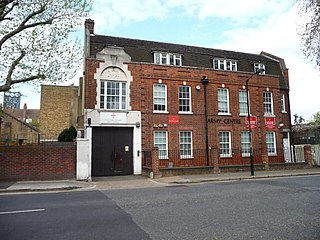
The Braganza Street drill hall is a military installation in Braganza Street, Walworth.

The Castle Armoury is a military installation in Bury, Greater Manchester, England.

The Phoenix Street drill hall is a former military installation in Lancaster, Lancashire.

Dare Wilson Barracks, is a military installation in Hexham, Northumberland. The building is named after Major General Dare Wilson who was commissioned into the Royal Northumberland Fusiliers and commanded 22 Special Air Service Regiment in the early 1960s.

Londesborough Barracks is a military installation in Kingston upon Hull, England.
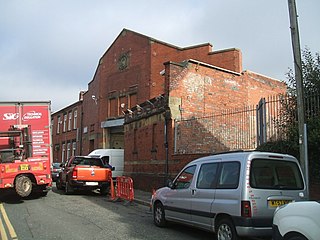
The Baron Street drill hall is a former military installation in Rochdale, England.

The Volunteer Street drill hall is a former military installation at the corner of Albion Street and Volunteer Street in Chester, Cheshire. The building is designated by Historic England as a Grade II listed building.

The Bank Parade drill hall, also known as the Keighley Green Drill Hall, is a former military installation in Burnley, Lancashire.

The St Paul's Street drill hall is a military installation in Huddersfield, West Yorkshire. It is a Grade II listed building.
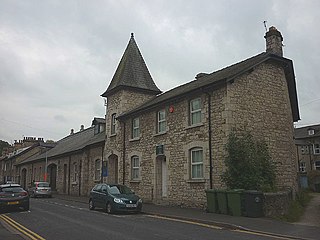
The Queen Katherine Street drill hall is a former military installation located on Queen Katherine Street, off Aynam Road, in Kendal, Cumbria, England.

The Bath Street drill hall is a former military installation in Warrington, Cheshire.
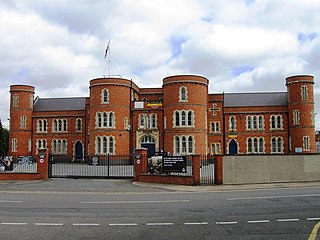
The Clare Street drill hall is a military installation in Northampton, Northamptonshire. It is a Grade II listed building.

The East Street drill hall is a former military installation in Bromley.

The Longden Coleham drill hall is a former military installation in Shrewsbury, Shropshire.
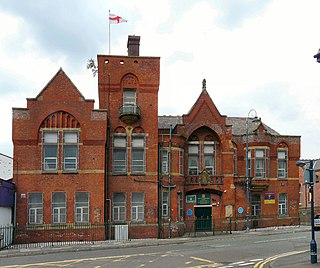
The Old Street drill hall is a former military installation in Ashton-under-Lyne, Greater Manchester, England.




















